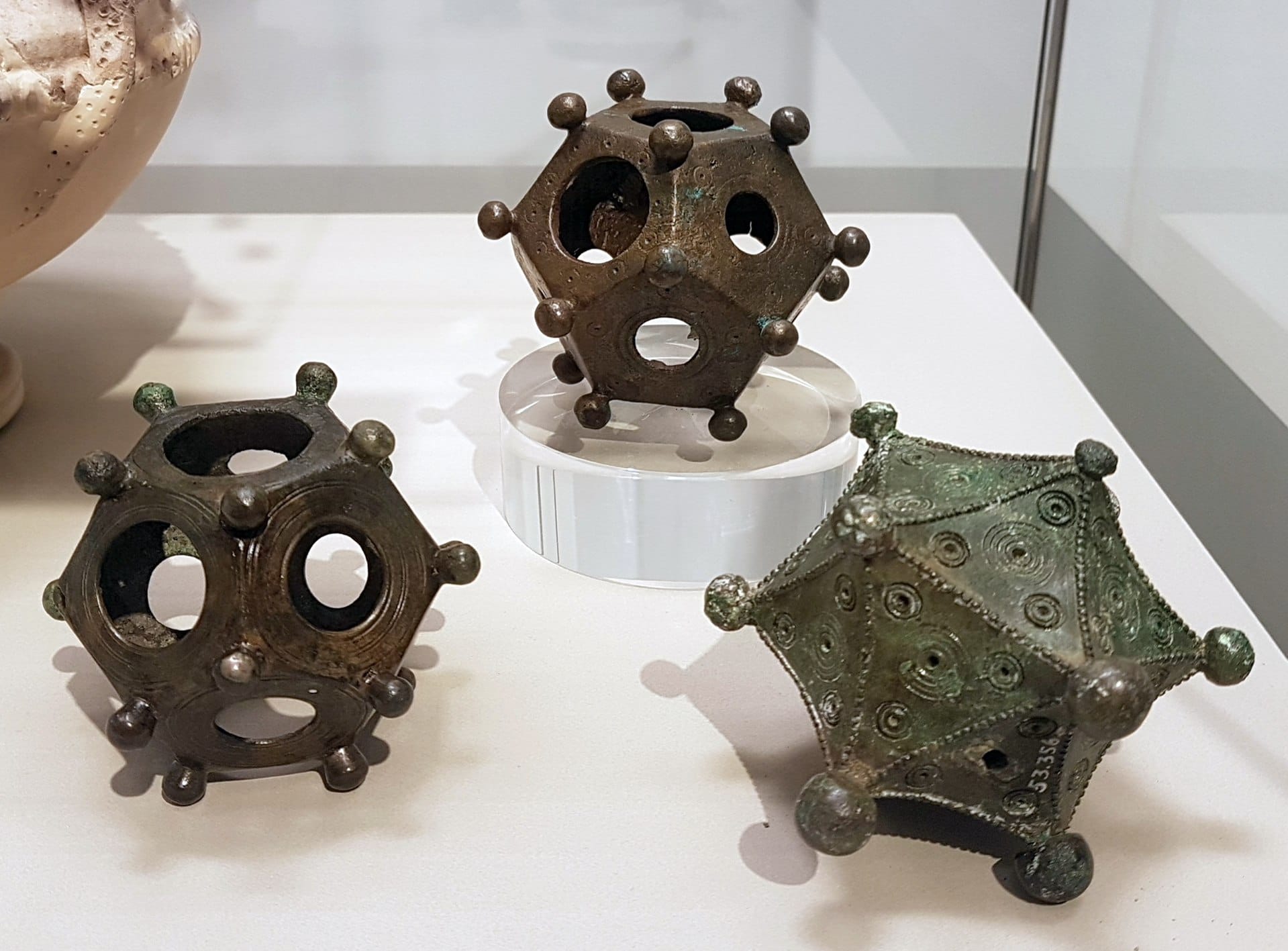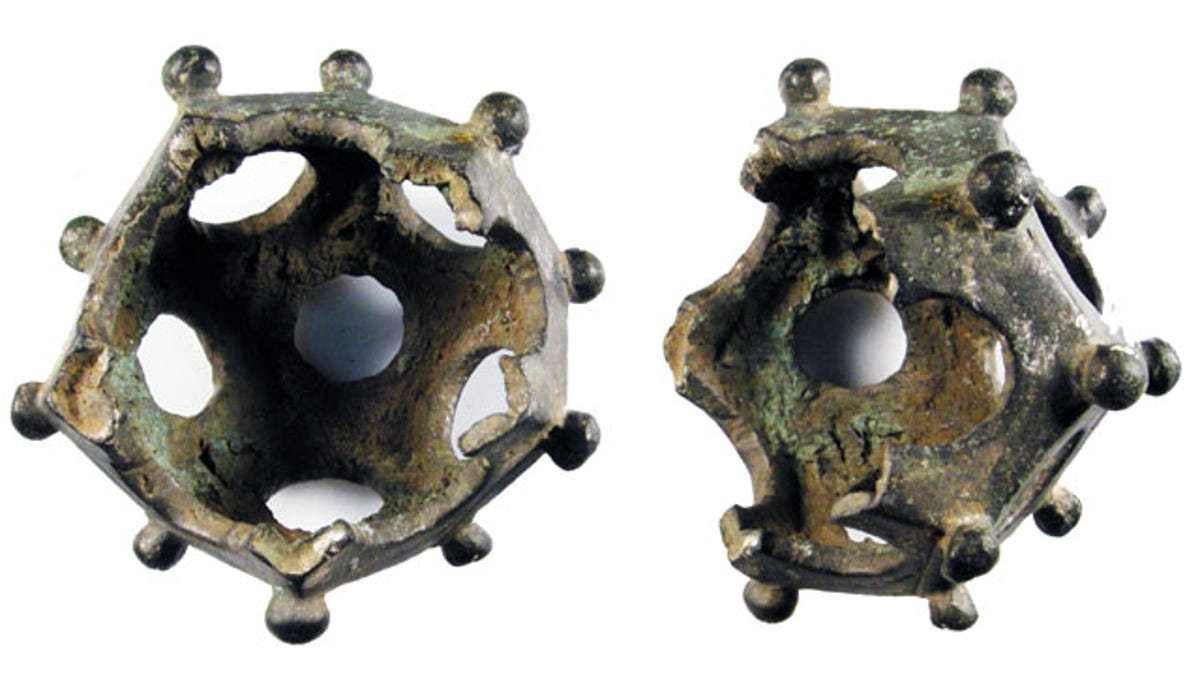There is no reason to think that these were made anywhere but within that region where they have been found and unlikely to be found very far from that region. Their apparent lack of functional value would make it unlikely they’d be transported very far away.
Doesn’t she get dizzy?
Why not? They’re certainly extremely portable, and I’ve already discussed in this thread how other utilitarian items in the Roman Empire have Empire-wide occurrence.
But you’ve argued for a functional value as candle holders.
And your “nobody cared about them” alternative argument is refuted by the circumstances where they occur, as grave goods or with coin hoards. People certainly cared enough about them to be buried with them or hold them with their wealth.
Candle holders are not something you laden yourself with if there are more valuable items to carry. Of course there is a simple counter-argument for someone with a background in the general subject, that would be to show a distribution of small decorative items greater than seen with these. The initial assumption is always that anything found originated where it was found, finding things far from where they originated is the exception. However my conclusions are mainly based on a lack of evidence, more details could be very revealing. The specifics of how they were made could be very telling. Analysis of the metal can reveal a wealth of information because we have so many examples of copper and bronze items from that time.
Kind of the point, when I’m pointing out that they were treated as valuable.
I’ve already explained in this thread how the Romans produced items with Empire-wide distribution, from Gazan amphorae finds in Britain to Empire-wide trade in wine, oil and garum. The Empire at its height was a cosmopolitan, highly-connected commercial giant.
Have you followed any of the links I’ve posted today? Analyses of the metals have been done. Radiographic studies of some finds have been done. How these were made, and what they were made of, are no mystery. They’e made of bog-standard casting bronze - quite high in lead, to facilitate flow in the mold.
The different-sized holes makes it seem like they’re an integral part of the objects’ function, but there are some that don’t have holes:
It’s also (AFAIK) the only icosahedron found. At least, the only one I can find an actual reference for.
Interestingly, when it comes to icosahedra, we do know that the Romans used that shape for a “utilitarian” purpose.
This artefact isn’t one of those, obviously, as it has no numbers, and is clearly somehow related to the dodecahedra in form even if it doesn’t have the holes.
I should note that the one without holes is an icosahedron (D20), not a dodecahedron (D12). I couldn’t find a photo of a Roman dodecahedron without holes.
When I see stable rigid objects with holes in it, my intuition is that something is put in those holes and stands up. So I’m inclined to support that candle holder possibility.
As to why it only appears in certain areas, perhaps it is a combination of utilitarian and cultural. Why buy an ordinary candle holder when you can buy one that also symbolizes the 12 virtues of Aristotle, or the 12 gods of olympus or whatever?
Regarding distribution: what about recycling? The various city-states always seemed to scavenge bronze for cannons when war broke out, to the point of destroying bronze artwork if things were getting desperate. The bronze purchased for Leonardo’s Horse was instead used to make cannons. A trade in used bronze might be profitable around the Mediterranean where it could be transported by ship vs. being carried overland from Northern Europe.
In the hypothetical that these are candle holders restricted to one region of the Roman empire, what did candle holders looks like in other regions? Were other candle holders made in a uniform way, or were there regional variations?
Wikipedia says “Smaller dodecahedra with the same features (holes and knobs) and made from gold have been found in South-East Asia along the Maritime Silk Road.” I haven’t been able to find details on how big these are, but if they were significantly smaller than the Roman models, that argues against a practical usage and more for a decorative one, as also does the fact that they were made of gold.
No, just now seeing them, except the first one you posted last night. One of my time machines must have worked because somehow I replied to this before you posted it.
Can you use it to go back and ask someone what these damn dodecahedrons are for?
It’s been unreliable so far. I don’t know how I managed that post. I think Calvin made a better time machine out of a cardboard box.
Time Traveler - (in latin) Excuse me good sir, what do these dodecahedrons do?
Roman Trader - Do? They don’t DO anything. That’s the beauty of it.
To my eye (which we have established to be non-expert) - the articles in that picture really don’t look like they are the same kind of thing. They share some features, but the dodecahedra look like they are tools, instruments, utensils or appliances for some rather exact and possibly businesslike purpose - they have an air of regular, engineered precision to them.
The isocahedron looks like a trinket - like a Christmas tree ornament, or a pot-pourri holder, where the decorative appearance is the function; it’s quite a bit more arts-and-crafts than the dodecahedra.
These Roman dodecahedrons, from the photos at least, don’t appear to have different-sized holes, unlike some of the others seen.
In particular, the faces of the icosohedron aren’t flat. Also, I can’t rule out that the beading on the edges is an artifact of the technique used to join the faces, but it looks purely decorative, and the central circle on each face isn’t perfectly centered, like they are for the dodecahedrons.
Man, why can’t the owners of these things post precise measurements?
However, I could imagine all of these objects being the same general thing, if that thing was the output of a task to properly interpret a written description for the design of a metal object. A practical exam for metalworkers: “Make a hollow metal shape of regular form with twelve faces; in each face will be cut a hole, of these sizes, encircled by an engraved line, and surrounded by engraved circles; on each corner shall be a knob” - or something like that. Depending on the competence of the individual, some people would make wildly different things.
But I think it would be reasonable to expect to find a surviving example of the written description somewhere, if that were the case.


